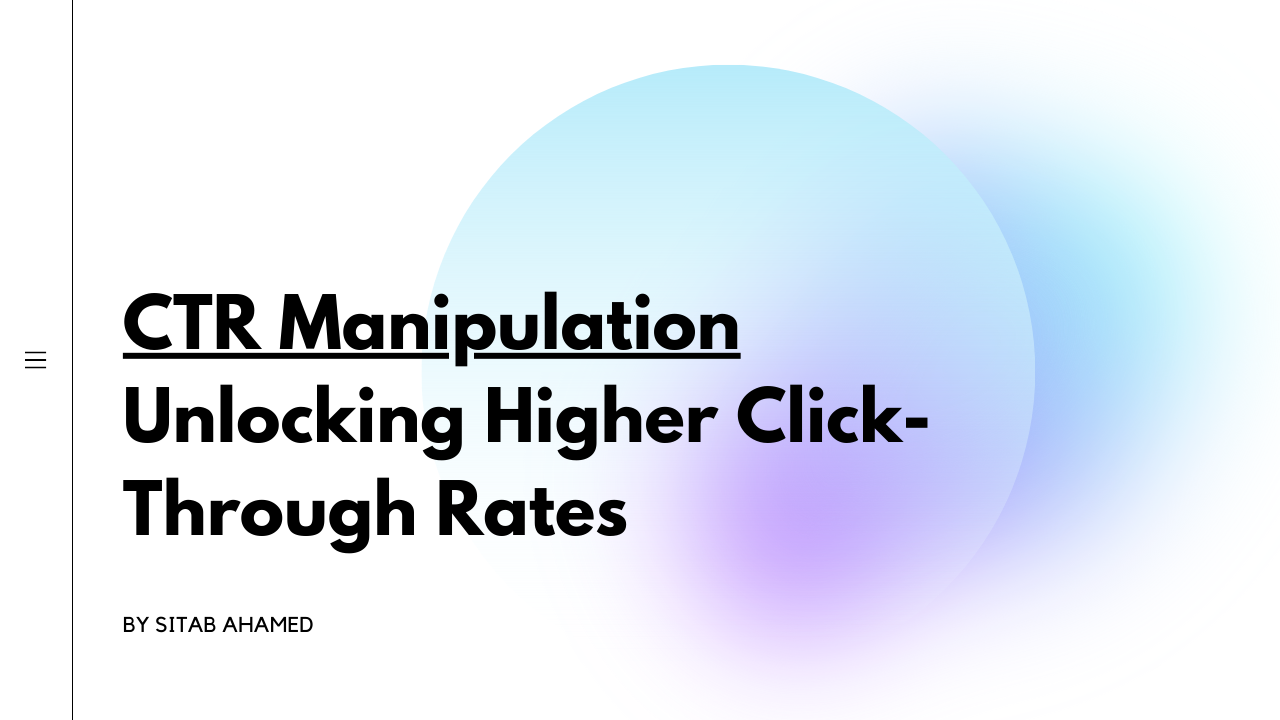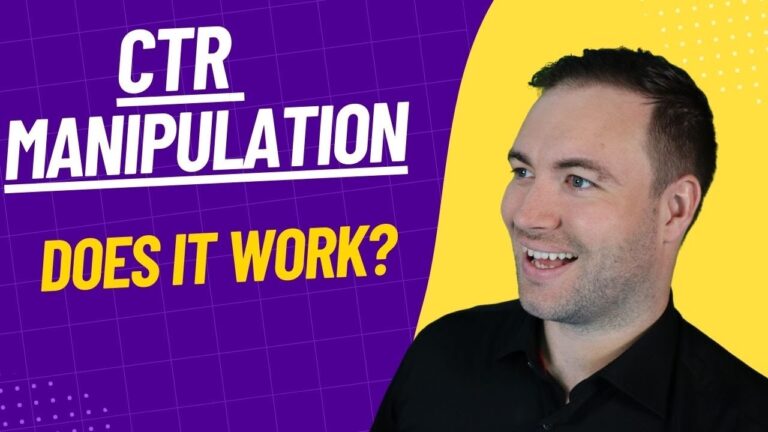Exactly How to Utilize CTR Manipulation to Gain an One-upmanship in Your Market
Transform Your Advertisement Campaigns With Targeted CTR Adjustment
Reliable ad campaigns pivot on the intricacies of click-through rate (CTR), a vital metric that mirrors target market involvement. Targeted CTR manipulation, notified by data analytics, offers a method to improve exactly how ads attach with possible consumers. By employing tactical strategies tailored to specific demographics, marketing professionals can enhance their messaging and visuals to foster deeper links. However, the landscape of digital marketing is ever-evolving, and comprehending the nuances of target market habits is crucial. What techniques can be carried out to ensure your projects not only reverberate yet reach with your target market?
Understanding Click-Through Price
What makes a click-through rate (CTR) an important metric in digital advertising? A high CTR recommends that the ad is appealing and relevant, while a low CTR shows a demand for optimization.
Recognizing CTR allows marketing professionals to evaluate the efficiency of different projects, ad layouts, and targeting techniques. It enables for benchmarking versus industry criteria, giving insights right into locations that may call for improvement. Furthermore, CTR plays a crucial function in seo (SEO) and pay-per-click (PPC) marketing, influencing high quality scores and total exposure in search results page.
Relevance of Targeted CTR

Furthermore, targeted CTR adjustment allows online marketers to refine their methods based upon audience actions and choices. By examining information, organizations can determine which segments react positively to certain web content kinds and adjust their campaigns as necessary. This accuracy causes extra impactful messaging and higher conversion prices.
Furthermore, targeted CTR promotes brand loyalty. In summary, the significance of targeted CTR exists in its ability to not only enhance project efficiency however likewise to create significant connections with audiences, paving the means for continual development and success.
Techniques for CTR Control
How can marketing professionals successfully adjust click-through rates (CTR) to accomplish desired end results? Several methods can be used to enhance CTR, therefore maximizing the effectiveness of marketing campaign.

Second, using distinctive visuals can dramatically influence CTR. Top quality images or videos that line up with the ad's message can draw attention and prompt individuals to click. Moreover, leveraging ad placement strategically on platforms where the target audience is most energetic can improve presence and interaction rates (CTR Manipulation Press Release).
Third, personalizing advertisements based on user actions and preferences can produce better results. Using retargeting techniques, online marketers can advise possible customers of product and services they formerly checked out, thus raising the chance of clicks.
Finally, maximizing for mobile is important, as a substantial section of internet website traffic originates from mobile tools. Making sure advertisements are mobile-friendly can result in boosted CTR and total project performance.
Analyzing Target Market Actions
Recognizing audience habits is vital for marketing experts aiming to improve click-through rates (CTR) and general project efficiency. By delving right into the inspirations, preferences, and on-line habits of target audiences, marketers can tailor their projects to resonate even more deeply with prospective customers.
Assessing audience behavior entails numerous key parts, including market evaluation, psychographic profiling, and customer journey mapping. Demographic analysis supplies insights into age, income, location, and sex, which can notify the design and messaging of promotions. Psychographic profiling, on the other hand, reveals worths, interests, and way of lives, enabling marketers to create web content that lines up with target market goals.
User trip mapping is necessary for comprehending exactly how potential consumers engage with numerous touchpoints, from initial awareness to last conversion. By identifying the phases where target markets involve or disengage, online marketers can optimize their approaches to improve CTR.

Gauging Project Success
Measuring campaign success is an essential element of any marketing method, as it gives the required insights to assess efficiency and drive future decisions. To successfully gauge success, marketing professionals should establish clear, measurable objectives aligned with overarching business objectives. Key performance indicators (KPIs), such as click-through rates (CTR), conversion rates, and return on financial investment (ROI), serve as essential metrics in this process.
Tracking CTR specifically permits marketers to analyze the performance of targeted marketing campaign. A high CTR shows that the advertisement reverberates with the target market, while a low CTR may require a reevaluation of targeting criteria, innovative components, or messaging strategies. In addition, assessing conversion prices offers deeper understandings into just how well a project drives desired actions, such as sign-ups or acquisitions.
Leveraging analytics tools can better boost measurement efforts, enabling LinkDaddy CTR Manipulation real-time information surveillance and modifications. Regularly evaluating project performance versus developed standards makes certain continual improvement and optimization. Inevitably, a robust measurement strategy not only highlights successes yet additionally discovers areas for improvement, leading the way for more impactful and reliable marketing campaigns in the future.
Final Thought
To conclude, changing advertising campaign through targeted click-through price (CTR) adjustment requires a comprehensive understanding of audience habits and efficient messaging methods. By using data-driven approaches, consisting of A/B testing and customized visuals, campaigns can attain higher involvement and conversion rates. Examining group and psychographic understandings better enhances the capability to attach with the target market. Inevitably, these methods add to increased brand name commitment and optimized roi, emphasizing the value of targeted CTR adjustment in electronic advertising and marketing.
Effective advertisement projects hinge on the complexities of click-through price (CTR), an important metric that shows target market engagement. A high CTR recommends that the advertisement is appealing and pertinent, while a low CTR shows a demand for optimization.
In recap, the significance of targeted CTR lies in its capacity to not just enhance campaign efficiency but likewise to create purposeful links with audiences, paving the method for sustained growth and success.
A high CTR indicates that the ad resonates with the audience, while a low CTR might necessitate a reevaluation of targeting criteria, creative elements, or messaging approaches.In final thought, changing advertisement projects with targeted click-through rate (CTR) adjustment requires a detailed understanding of audience behavior and efficient messaging techniques.